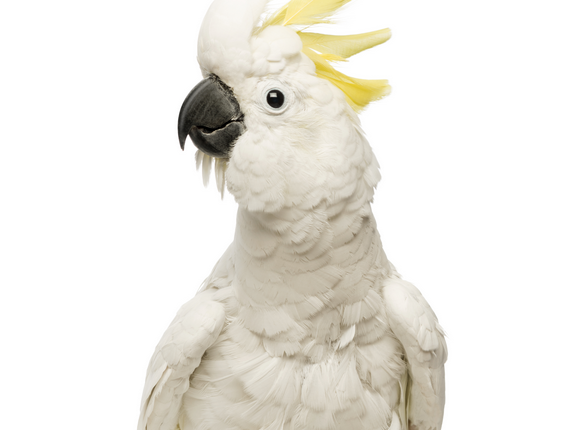Study: Cockatoos smarter than human toddlers
Posted by staff / September 6, 2013 cashew nutcockatoocockatoosobject permanence

The author of this article begins with:
Whilst I was traveling last month, I ran across an interesting little study that examined object permanence and spatial tracking abilities in Goffin’s cockatoos. Object permanence is the idea that, like a cashew nut hidden in a pocket, an object exists even when it is not visible to the observer. Further, it also includes spatial tracking so when that concealed cashew nut is removed to a new location, say, a parrot puzzle toy, and hidden there, the observer (or cockatoo) then knows to seek it in that new location, even though the nut could not be observed whilst being relocated.
This level of cognitive development does not occur in human children until they reach four years of age. But according to a newly published study by an international team of scientific researchers and a flock of cockatoos based at the University of Vienna, object permanence abilities in young cockatoos rival those of four-year-old human children. Which of course means that hiding your stash of cashew nuts whilst your pet cockatoo is watching may be a bad idea.
Jean Piaget, a Swiss developmental psychologist and philosopher, identified various stages that infants reach, in terms of their understanding of “object permanence”. He wrote that there are 6 such stages and it takes years to achieve them all. An example of a test for this cognitive skill would be a shell game, where an object is placed under a shell, and then the group of shells are moved around. Picking out the shell with that object hidden underneath, would be an example of the ability to pass this cognitive test.
For much, much more on this topic, see the original post here: The Guardian.
Photo credit: Eric Isselée – Fotolia.com
Comments are off for this post.